RETAIL LOGISTICS
EUROPEAN REAL ESTATE STRATEGIES FOR RETAIL EVOLUTION

EUROPEAN REAL ESTATE STRATEGIES FOR RETAIL EVOLUTION

INTRODUCTION
WHAT DRIVES RETAIL LOGISTICS?
WHAT DOES THIS MEAN FOR REAL ESTATE?
WHAT DOES THIS MEAN FOR REAL ESTATE STAKEHOLDERS?
HOW ARE RETAIL LOGISTICS OPERATIONS RESPONDING TO THESE CHALLENGES?
SUMMARY
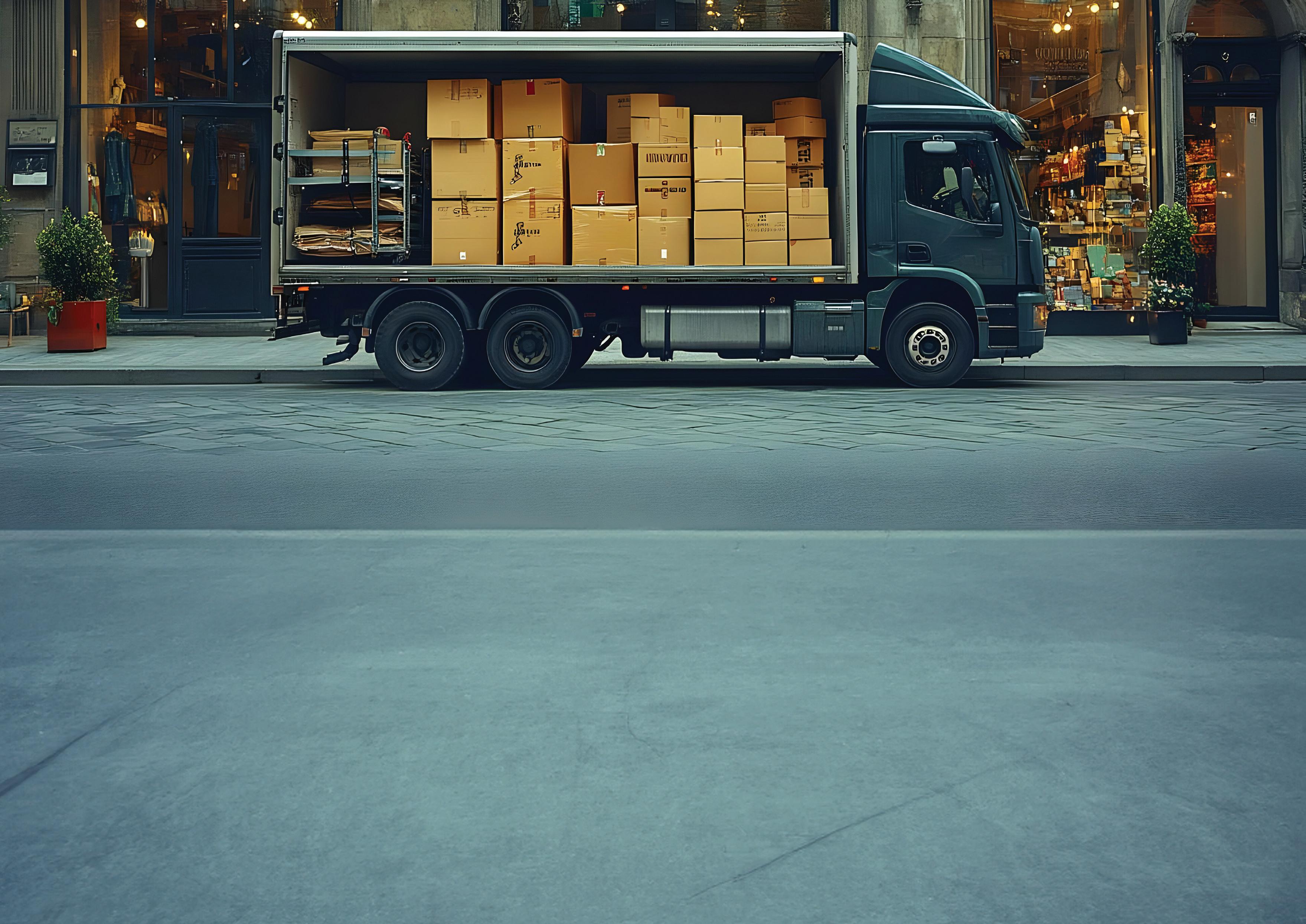


Retailers have experienced some of the most testing times in modern history over the past several years. Not only have they seen a massive shift in the way in which consumers have chosen to shop with the online retail boom but they have also faced the extraordinary shock of the Covid-19 pandemic, including the forced closure and then recalibration of experience in physical stores, the massive swing in demand to online channels (and then swing back) and the disruption to global supply chains.
Coupled with this has been a rapidly changing consumer market with shifting demographics and evolving appetites for in-store and online retail experiences. The ways in which consumers choose to engage and spend with brands has changed markedly as has the needs of both logistics and retail real estate.
So, what drives retail logistics? What is changing and why? What does this mean to real estate strategies? And what do these mean to real estate stakeholders – including retailers and logistics providers, developers and investors – both now and in the future?
This report explores the key drivers of retail logistics, how these are evolving and how European real estate strategies are responding.


What are the fundamentals that drive the choices that retailers and their logistics partners make to ensure that their networks and systems are optimising performance and meeting requirements?
MAXIMISING CUSTOMER EXPERIENCE MINIMISING COST-TO-SERVE
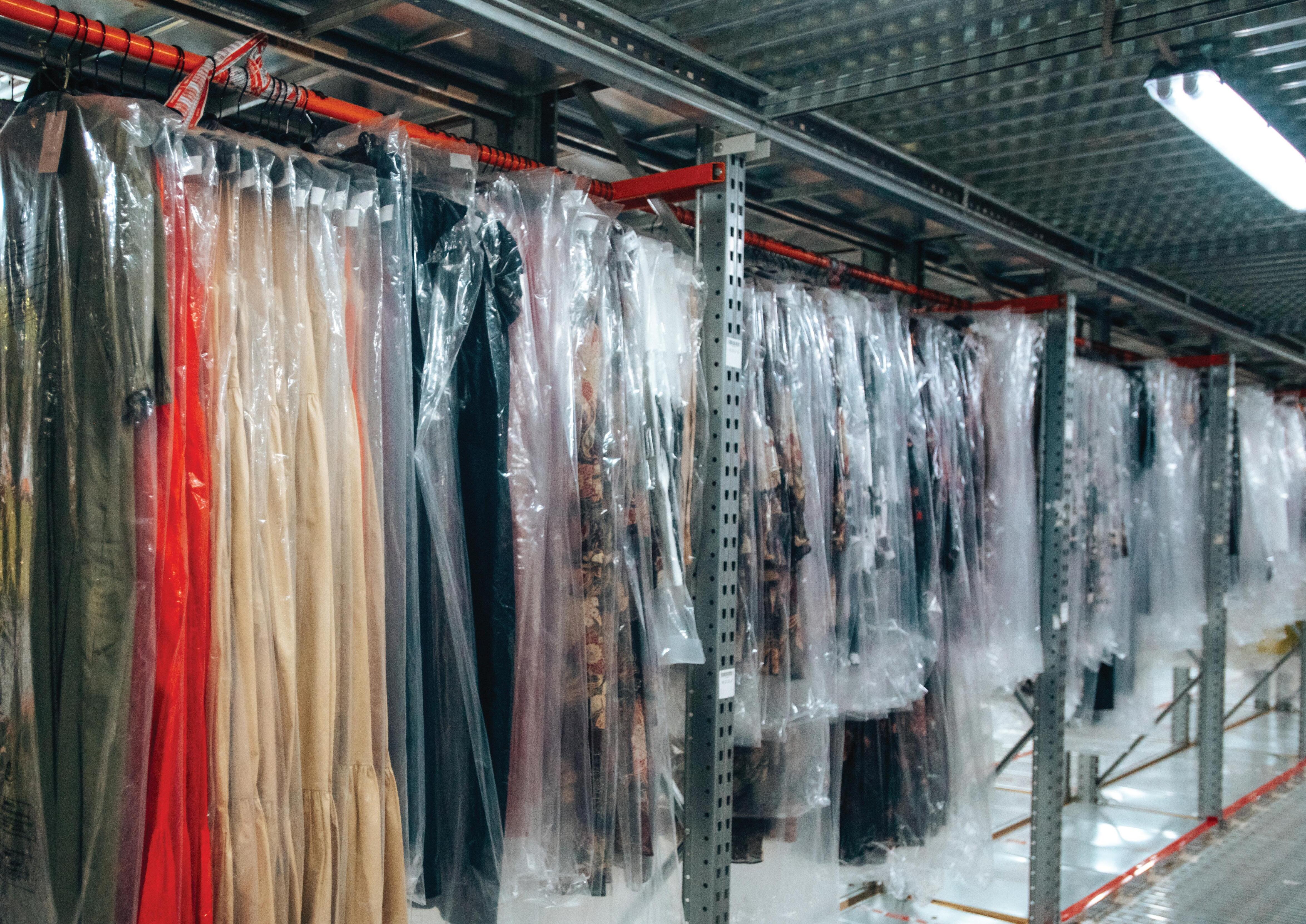

The key choices relating to supply chains and logistics operations have centred around these two opposing fundamentals, regardless as to retailer type or retail channel.
THE TWO GUIDING PRINCIPLES OF RETAIL LOGISTICS OPTIMISATION ARE: SO HOW HAVE THINGS EVOLVED AND HOW ARE THEY CHANGING?
TO UNDERSTAND HOW TO MAXIMISE CUSTOMER EXPERIENCE, WE NEED TO UNDERSTAND WHAT CUSTOMERS WANT: FOR ALL RETAIL, THE CUSTOMER IS KEY.
Retail operations have typically been split into two channels: in-store and online. The majority of goods sold in Europe are still sold in physical retail settings and the store is still regarded as an important part of retailers’ ability to create brand awareness and customer engagement. Online retail has grown extraordinarily and, according to GlobalData, represents 13% of total retail sales on a European basis but as much as 22% in the UK, 16% in Sweden, 15% in Denmark and 14% in the Netherlands.

Source: GlobalData
The challenges that multiple channels of retail represent to retailers and their logistics networks are significant. The complexity of retail product flows is now far greater than it was in the recent past:
• The number of potential destinations has grown from a finite number of stores to a far larger number of potential end destinations.
• The logistics to serve these different types of end destinations have different cost profiles – singledelivery destination can cost more than a delivery being made as part of a larger consignment to a bank of parcel lockers or a parcel store/retail outlet for customer collection.
• They also have different expectations of successful delivery –delivery failures create cost as a result of the wasted journey to deliver and then the additional cost of another journey to attempt to re-deliver.
• And alongside online retail fulfilment, retailers also need to ensure that they are replenishing physical stores in timely, efficient ways to maintain revenue generation, margin preservation and customer satisfaction.

(STORES ONLY) (STORES AND ONLINE RETAIL)
SUPPLIER
SUPPLIER
NATIONAL DISTRIBUTION CENTRE
REGIONAL DISTRIBUTION CENTRE
NATIONAL/ REGIONAL DISTRIBUTION CENTRE
LAST MILE FACILITY
CARRIER/3PL
DELIVERY FLEET SHOP
CONSUMER
CONSUMER
CONSUMER LOCATIONS TO SERVE INCLUDE:
RETURNS FACILITY
CUSTOMER EXPECTATIONS OF WHAT MAKES A GOOD RETAIL EXPERIENCE IN EACH SETTING ARE DIFFERENT – AND RETAILERS’ ABILITY TO DELIVER THE RIGHT CUSTOMER EXPERIENCE WILL BE PART OF WHAT GOVERNS SUCCESS:
Typically, customer expectations of in-store retail tends to be split into two different types of retail offering:
• EXPERIENTIAL: where consumers choose to spend their time enjoying their retail experience, where they want to be excited and delighted by discover, learning and interacting with products, services and brands. Experiential shopping relies on the quality of the in-store offering, not just availability of products but also the services and additional experiences offered and the transactional experience (the customer engagement they receive from staff and the ease with which customers can purchase).
• CONVENIENCE: where customers’ choices are more governed by the need for goods rather than for a desire for experience. Convenience shopping is more transactional and important features are location of retail outlets, availability of product and ease of accessing products and ease of transacting.
Customers’ expectations of a good online retail experience include:
• The interaction with the website including aesthetic appeal and user-friendliness (including the ease with which they can secure information they need to make a decision about a product they can’t touch or feel and the ease of checking-out, including options for payment methods).
• The availability of products and sometimes (but not always) the price.
• Delivery and returns, offering a range of options – by price, speed and flexibility – as well as track-and-trace tools allows customer to choose how they want their products delivered.
• Retailers now face the challenge that customers are increasingly expecting omnichannel or ‘total retail’ experience: they are expecting retailers to seamlessly recognise them as shoppers across both digital and physical retail environments and meet their expectations at each point in their journey. Consumers are increasingly using a blend of channels –including in physical stores, on retailers’ websites and on social media channels – to engage with retailers, fluidly moving between them to find the ways that fulfil their wants and needs.

IN ALL CASES, CUSTOMERS WANT TO BE ABLE TO FIND THE PRODUCTS WHERE AND WHEN THEY WANT THEM.
A retailer’s ability to be able to generate revenue depends on them being able to ensure that, regardless as to whether a consumer is shopping in store or online, that products are:

ordering the right volume of stock and holding it in the right places at the right times.
being able to find the product, be it in a warehouse or in a store or somewhere in between such as being processed in a returns centre or being transported or still at the manufacturers.
ensuring that the product can be delivered if it is an online purchase or that the product is not damaged either in a store or in a warehouse, particularly to secure the important non-discounted price.
Retailers of different types face varying challenges including:
CUSTOMER DEMAND PEAKS either weather or seasonality related, which lead to spikes in demand for specific products.
especially for ‘hot’ or highly soughtafter products and needing flexible and agile supply chains to be able to respond.
to ensure working capital is deployed appropriately into the right stock at the right time and avoid both overstocking (and have to discount to move stock) and understocking (and miss potential sales).
particularly as an in-store experience can often be most engaging for the customer when receiving assistance and advice but also ensuring that product is available in the right places and at the right times.
IN AN ONLINE TRANSACTION, AS MUCH AS THE AVAILABILITY OF PRODUCT AND THE CUSTOMER JOURNEY THROUGH THE RETAILER’S WEBSITE ARE IMPORTANT, ARGUABLY THE GREATEST CHALLENGE FOR RETAILERS AND THEIR LOGISTICS PARTNERS IS SATISFYING CUSTOMER EXPECTATIONS AROUND DELIVERY.

So, what makes a difference to consumer satisfaction in delivery of online purchases? Somewhat contrary perhaps to expectation that speed of delivery is more important, European customers consistently put cost as the most important factor in delivery of their online purchases –which has become even more pronounced as consumers have been under more financial pressures – followed by speed and convenience.
Proportion of consumers agreeing
It is usually one of the last touchpoints a customer has with an online retail transaction – and the success of the whole transaction can hinge on whether the delivery meets the customer’s expectations.
Source: Auctane, Retail Economics Ecommerce Delivery Benchmark Report 2023 and 2024
Question: Which of the following features are most important when ordering online?
Convenience to the consumer means the flexibility to choose how quickly, when and how they would like their purchases delivered – which creates complexity (and cost) for retailers – as well as how much they are prepared to pay for that flexibility. Convenience also plays into the destinations to which consumers prefer their deliveries to be made: shoppers want the flexibility to choose where they would like to receive their deliveries and this differs between countries and age groups.
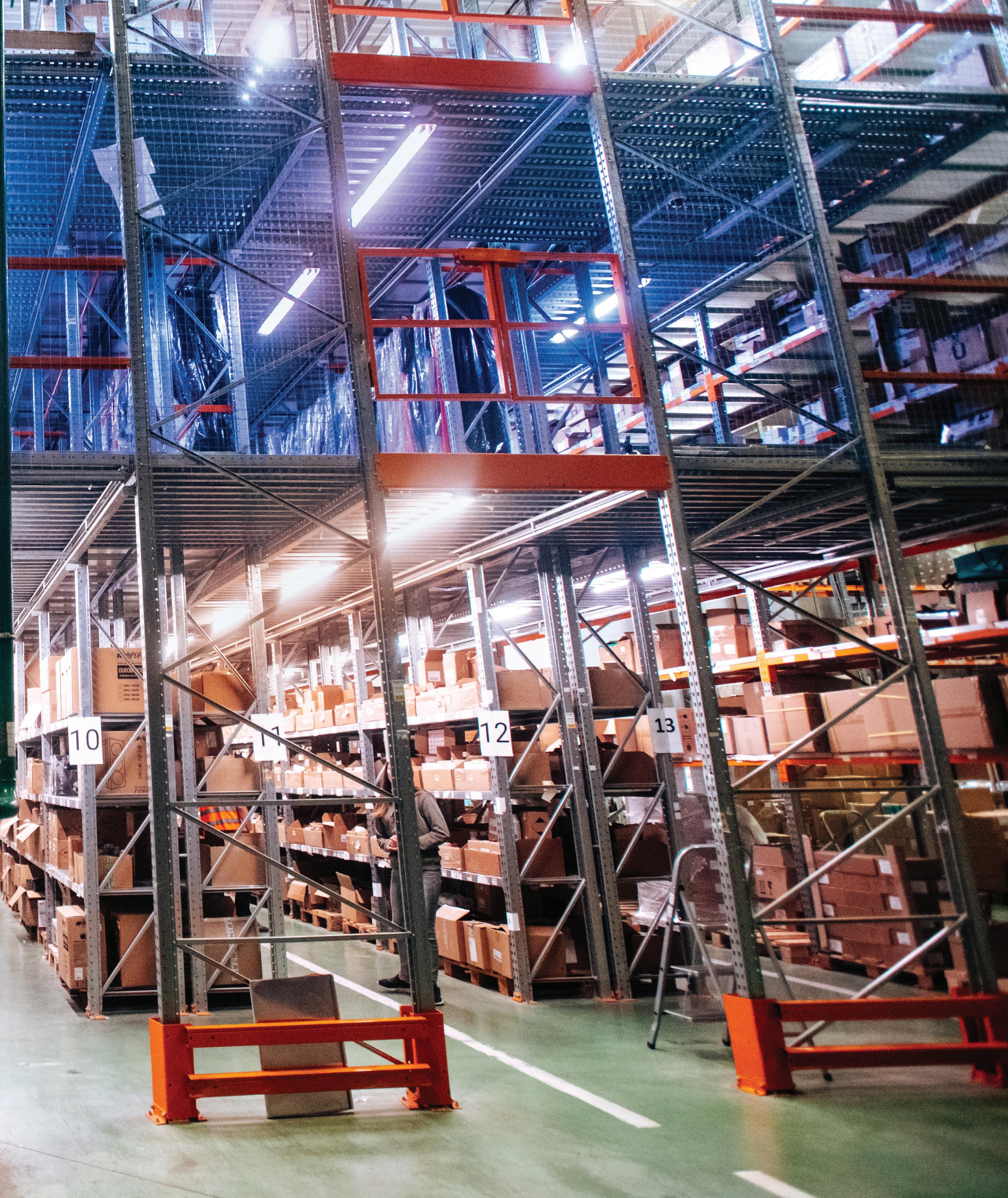
IN CONSIDERING COST TO SERVE, WE HAVE TO CONSIDER HOW IS COST MEASURED:
this has been the predominant focus for retailers (and their logistics partners) as every opportunity to reduce cost creates potential margin security or even improvement. Improvements to operational efficiencies and reducing per-unit costs can lead incremental cost savings.
increasingly retailers and logistics partners are focusing on the environmental impact of their supply chains, particularly as consumers are rapidly sharpening their attention on how businesses they choose to spend their money with are aligned with their own personal values. This extends to transportation choices and supplier decisions as well as location and real estate decisions.
similarly, retailers are paying close attention to the impact their sourcing and logistics strategies have on the people who work for them and the communities in which they are located, as part of their commitments to being good corporate citizens. This includes ensuring workers in factories, stores and warehouses are afforded working conditions rights and protections as well as promoting fair pay and gender and other equality protections.

WHEN THE WAYS IN WHICH A RETAILER NEEDS IT SUPPLY CHAIN TO FUNCTIONS CHANGES, THERE IS USUALLY COST INVOLVED TO MAKE THAT RESPONSE.

For example, when a retailer grows its physical store network, it introduces more destinations to be served and more cost into the sourcing and moving of the inventory to stock these new stores. Similarly, when it grows its online retail offering, it is increasing the customer delivery volumes and potential destinations to serve.
Some shifting dynamics are outside retailers’ control. For example, supply chain disruption has recently been a major issue for retailers. Retailers need to be able to ensure that they can source the right products in the right quantities and that they can get them to the right places at the right times – and at the right cost to ensure they can maintain margins. Challenges that can result in additional supply chain costs include:
SHIPPING COSTS
USD per 40 foot container
which can result in restrictions to trade and additional costs such as new tariffs and greater administration burdens.
AND HEALTH EVENTS
including natural disasters (such as droughts, earthquakes or weather events) or major health events (such as the Covid-19 pandemic or Avian flu) which can result in disruptions to manufacturing and transportation.
such as the invasion of Ukraine by Russia and the disruption to shipping through the Suez Canal the which can mean inventory movements may be interrupted or routes may be changed which can add cost and time to the overall delivery of goods.
Source: Drewry World Container Index
THE LOCATION, SIZE AND FORMAT OF STORES ALSO CREATES COMPLEXITIES AND THEREFORE COST.
The location of a store can present significant challenges. Replenishing a convenience store or high street shop is far more challenging than replenishing a hypermarket or a retail park for a number of reasons including:
• Challenges to larger goods vehicle access which can create delays and increase costs
• Lack of dedicated unloading areas, which can lead to more time and potential for costs from parking penalties
• Proximity to residents which can mean limits to out-of-hours deliveries and unloading)
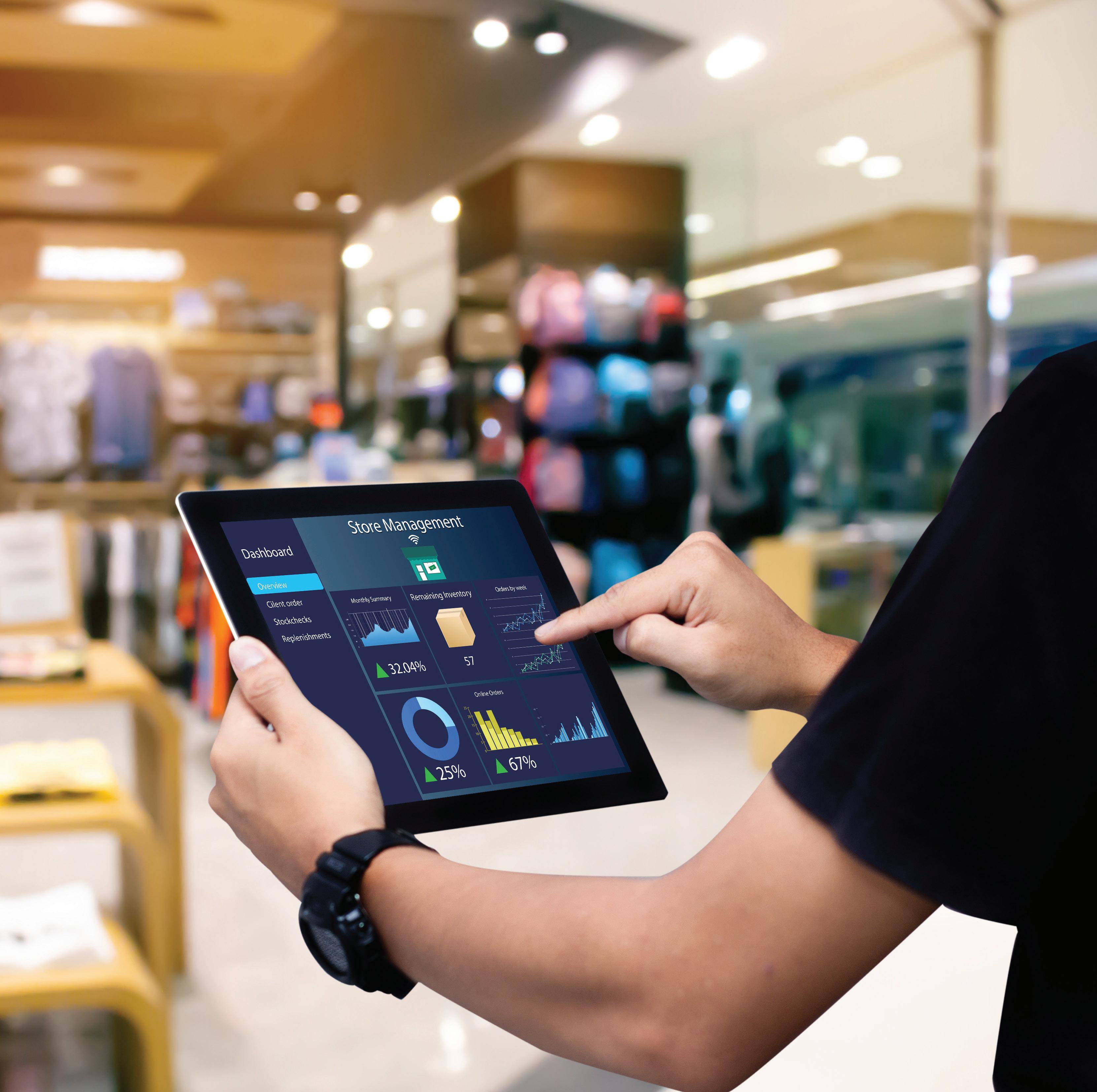
The size of a store can also inform the cost to replenish it: smaller stores have less stock cover than larger formats. This means that there is less buffer stock to protect product availability, and therefore stores will need to be replenished more frequently which leads to greater cost. Similarly smaller store formats have less capability of holding stock in in-store storage areas which larger format stores may be able to create.
The format of stores also plays a part in the replenishment challenge. High street stores and convenience stores can be more challenging to serve due to their urban or residentproximate locations and the lack of dedicated access.
Shopping centres can be more difficult destinations to serve for replenishment because there is a more complex journey to the retail unit. Whilst goods can often be efficiently delivered into the shopping centre itself, there needs to be several more ‘touches’ in the journey to the actual shop floor, all of which can add time and cost.
MODERN RETAIL LOGISTICS OPERATIONS ARE COMPLEX.
To optimise performance and minimise cost, retailers and their logistics partners need efficient networks and systems, driven by data and analysis, that have the capability to flex when required, especially at peak times and during demand spikes. Welldesigned, resilient logistics networks and operations have been created with flexibility and reliability to manage changes in demand and unexpected interruptions.

INEFFICIENT SYSTEMS INCLUDE:
(each touch point in a supply chain creates cost, delay and risk of damage)
(such as by distance, route or vehicle loading)
Proportion of respondents agreeing
FAILED DELIVERIES
(which result in wasted journeys and repeat delivery attempts)

A RETAILER’S ABILITY TO GENERATE REVENUE DEPENDS ON GETTING INVENTORY INTO POINTS FOR ‘SALES READINESS’ IN ORDER TO CONVERT INTO INCOME.
Returns, especially from ecommerce operations, represents a significant drag on revenue capture: when a product is returned, the speed with which the product can be made available to be sold again is crucial to revenue capture, especially at peak times when a lack of availability can mean not only a lost sale (especially at undiscounted prices) and margin impact but an erosion of customer loyalty.
Additionally, the cost of the actual journey of a returned item is often entirely borne by the retailer, especially in online sales, which means additional cost for the retailer to get the product back into a sales-ready state. This includes the physical transportation, the receiving and inspecting items for refurbishing and repackaging and then returning of items to a retailer’s inventory or disposing of them if they cannot be resold. And retailers are limited in how much they can reclaim from consumers, especially for online purchases, as the majority of customers routinely say that they believe that the retailer should bear the cost of online returns.
RETURNED GOODS CAN TAKE UP TO TO PROCESS AND GET BACK IN TO STOCK FOR SALE.
CUSTOMER WILLINGNESS TO PAY FOR ONLINE RETURNS
30 DAYS
Source: Newton Europe
6%
RETURNS ACCOUNT FOR A HIT ON THE RECOMMENDED RETAIL PRICE OF ALL SALES.
Source: Newton Europe

Source: Retail Economics, Auctane Ecommerce Delivery Benchmark Report 2024
Question: Thinking about when you need to return an item, are you willing to pay for returns for products ordered online?
FOR YEARS ACROSS EUROPE, THE CHALLENGE OF LABOUR AVAILABILITY AND COST HAS BEEN A SIGNIFICANT CHALLENGE FOR LOGISTICS OPERATIONS OF ALL TYPES.
The shortage of appropriate staff – be it higher skilled roles such as truck drivers, warehouse managers or systems engineers or lower skilled jobs such as warehouse operatives – can materially impact the ability of a logistics network to function. Shortages in an environment of significant demand – particularly in core locations –has resulted in labour costs increasing significantly in recent years.
In addition, the use of more automation, technology and data in logistics networks is driving demand for new skills – such as robotics engineers and data scientists –for which the logistics industry is competing with other sectors for the same skills and expertise, further impacting costs.
SHORTAGE OF SUPPLY CHAIN AND LOGISTICS
LABOUR
Source: Descartes Systems How Bad Is The Supply Chain and Logistics Workforce Challenge?
Based on late 2023 survey of 1,000 supply chain and logistics leaders in Europe and North America
Source: Eurostat
&

54% GROWTH OVER 20 YEARS
30% GROWTH IN 4 YEARS
ALL EUROPEAN BUSINESSES, INCLUDING RETAILERS AND LOGISTICS BUSINESSES, ARE INCREASINGLY BEING REQUIRED TO REPORT ON AND IMPROVE THE SUSTAINABILITY OF THEIR OPERATIONS.
These obligations come from regulatory requirements (such as through the EU’s Corporate Sustainability Reporting Directive), shareholder scrutiny (including through EU-Taxonomy reporting) and customer expectations (how authentically do customers feel the retailer’s actions adhere to their corporate ethos and how closely do these align with their own attitudes?). Areas of focus extend into supply chains and logistics operations including the environmental impact of transportation, storage, manufacturing and waste management as well as social elements such as worker safety and welfare and diversity and inclusion.
Transportation and distribution for retailers can be a significant component of their environmental impact when considering Scope 3 emissions as well as Scope 1 and Scope 2. Finding ways in which to minimise environmental and social costs (as well as financial costs) can make a significant difference to retailers in terms of ensuring ongoing customer engagement (and therefore revenue and margin protection), maintaining investor confidence and fulfilling corporate sustainability requirements.
2% RETAIL, SCOPES 1 & 2
4% WASTE
5% BUILDINGS
15% MOBILITY & TRANSPORTATION
23% POWER
23% AGRICULTURE & FARMING
28% INDUSTRY (eg. chemicals, textiles)


So how can logistics networks and systems help to ensure retailers are maximising customer experience and minimising cost to serve? Like the challenges that retailers face, there are many different opportunities for optimisation. Logistics operations’ improvement and optimisation is often as a result of the sum of incremental gains – that is, the combination of many improvements make a big difference to overall performance.
LOOKING AT EACH THE CHALLENGES ABOVE IN TURN, HOW ARE LOGISTICS OPERATIONS, NETWORKS AND SYSTEMS ABLE TO ADJUST AND IMPROVE TO MAKE A DIFFERENCE TO OVERALL PERFORMANCE?


CRITICAL TO ENSURING THAT PRODUCTS ARE WHERE THEY NEED TO BE WHEN THEY NEED TO BE THERE IS KNOWING WHAT PRODUCT IS WHERE AND WHEN IT WILL BE NEEDED SOMEWHERE ELSE.
A central view of stock (knowing what product is where) is important to ensure customer demand can be satisfied by being able to locate and deploy the product appropriately.
Central view of stock is also useful for shipfrom-store strategies (that is, when online orders are picked, packed and delivered directly to customers from stores rather than warehouses): locating a product in a store for delivery to a customer can help a retailer to optimise its inventory and achieve a non-discounted sale but relies on knowing whether there is product available to be delivered.
Central view of stock systems include using tagging such as barcodes and radio-frequency identification (RFID) along with sophisticated inventory management systems that can track and identify multitudes of SKUs within a retailer’s product range across many alternative locations.

DEPLOYING INVENTORY AT THE RIGHT TIME TO THE RIGHT PLACE DEPENDS ON THE ABILITY TO RESPOND OR PREDICT DEMAND:
such as when seasonal peaks are expected and certain products are likely to be purchased. Retailers use data to ensure that they are ordering, holding and deploying the right inventory to the right stores and warehouses at the right times (for example, outdoor furniture and barbeques in the lead up to and during Summer, coats, boots and wet weather gear in Autumn and Winter).
such as when a product is ‘hot’ and inventory needs to be replenished quickly to ensure sales capture. This can involve solutions such as nimble and flexible production strategies (including nearshoring some manufacturing, such as for fashion and apparel to ensure production can be ramped up and delivered to stores and warehouse quickly) or flexible ordering strategies with suppliers.
Retailers may also use dropshipping (delivery directly to the consumer from the manufacturer or supplier without the additional handling of the product at a retailer’s warehouse or store) to speed up delivery and reduce cost
Retailers are using the vast volumes of data being collected and applying analytic tools to create predictive reordering strategies to maintain appropriate stock levels. For example, AI tools are being used for predictive reordering by monitoring online consumer activity (even in hover mode) or shopper in-store activity (including dwell time monitoring to understand customer engagement with products and store environments) in order to determine what products are likely to be required and ready them for dispatch as soon as needed.
such as employing ‘push commerce’ strategies to create demand (and therefore smooth unpredictability). For example, by using data from a consumer’s previous purchasing history, a retailer can suggest when they might need to reorder; they may also make suggestions for complementary product purchases which could enhance customer engagement and loyalty, especially if closely aligned with experience over convenience.
Subscription models can also offer the same opportunity to predict demand as may the Internet of Things (for example, your smart fridge could tell you when you need to reorder products or even do it for you). ‘Push commerce’ can also mean that profitability on product is achieved more easily because the customer is already engaged for sale and the product is already ready to be deployed, creating an ecosystem of customer experience and loyalty.
In addition, creating a unified customer view – that is, understanding customers across the ‘total retail’ spectrum – means that retailers will be better able to learn about behaviours, preferences and purchasing patterns and anticipate customers’ future actions. This can lead to better restocking ordering strategies for retailers as well as ensuring that products are in the right places within the supply chain to best capture the sales revenue.
Retailers can also achieve better product availability by sharing information with their suppliers. By creating better transparency of inventory levels and expected reordering requirements, suppliers can be ready to push the button on production to ensure that products are available to be delivered to retailers when they need them. This can also enable efficiencies such as dropshipping.
Retailers can also achieve efficiencies for product replenishment in stores which will lead to higher levels of customer experience. For example, for large format stores, packing products into roll cages, racks, pallets or cases in product groups destined for specific ‘planograms’ of individual stores and then loading delivery trucks efficiently with these planograms in mind for easy and swift movement and unpacking will mean that staff at the delivery point will more efficiently be able to get products onto the right shelves and racks.
Additionally, if retailers can employ out-of-hours store replenishment (as is often the case for large supermarkets and retail park retailers), this can free up in-store staff during shopping hours to ensure that they are able to provide in-store customer service.


A CRUCIAL PART OF ONLINE RETAIL CUSTOMER EXPERIENCE IS THE SATISFACTORY DELIVERY OF PURCHASES.
Failing to give shoppers a choice of delivery option that suits them threatens the ability for retailers to capture an online retail sale. Similarly, if their actual delivery experience fails to meet their expectations, this represents risk to customer satisfaction which can damage a retailer’s brand and threaten customer loyalty.
As shown above, consumers value flexibility alongside low cost and speed of delivery. To ensure customers continue with an online transaction, retailers offer delivery options to customers including:
consumers may choose to shop with a different retailer if they cannot get the product when they want it so retailers should offer a variety of speeds to ensure that they capture the sale.
in order to be able to achieve deliveries at the appropriate speeds and costs, retailers need to set a cut-off time for when customers can place their order. The later this cut-off time (particularly for high volumes), the greater the cost is likely to be.
customers prefer to make choices about where they have their deliveries made including to home, to stores or to other destinations like parcel shops and parcel lockers.
shoppers also value the ability to choose a preferred parcel carrier, particularly where they have had past experiences of good (or poor) service.
offering a range of speed or destination options can also mean different pricing (to reflect the higher cost of service). Loyalty or subscription programmes (which can deliver valuable consumer data to the retailer) could also play a part by offering discounted delivery costs to those who sign up.
Different delivery options, however, represent different costs to the retailer: faster delivery, delivery to home and later cut-off times can mean greater cost, which often cannot be recouped in full from the customer.
Incentivising customers to choose options that are less costly to serve can be a cost advantage to retailers without compromising customer experience. For example, a retailer could offer the customer a lower cost for delivery to a combined delivery destination (such as a physical store, a parcel locker or a parcel store) where a greater number of individual items can be sent in bulk (reducing the per-item cost to deliver) and where the customer can choose when they would like to collect (reducing the risk of failed delivery and the cost of additional attempts).
Other strategies could include increasing basket size thresholds to qualify for free delivery (which can reduce the overall cost per item as a large value is delivered in the same parcel as well as increasing customer spend) or offering discounted or free delivery for membership to customer loyalty schemes (again potentially driving further spending).
WHAT CAN RETAILERS DO TO ENSURE THEIR LOGISTICS OPERATIONS ARE ABLE TO RESPOND TO CHANGING DYNAMICS, BE THEY PLANNED OR UNEXPECTED?
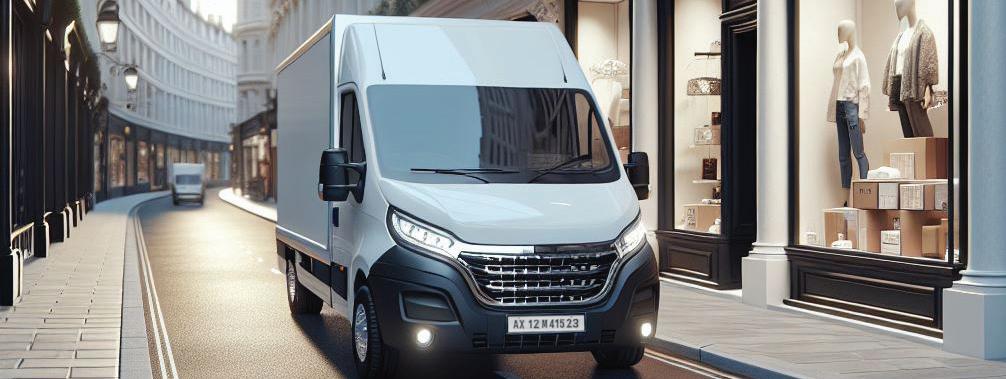
When choosing to expand or reduce store numbers, relocate stores or grow online sales revenues, careful modelling of expected impact on the volume of inventory demanded and where and when it needs to be in place can greatly assist retailers in determining whether their current supply chain is optimal for their imminent and future needs.
Similarly, how can retailers create resilient and robust supply chains that can manage unexpected disruption? A diversification of suppliers can help to spread risk across a number of sources and locations to ensure that they are less exposed to the risk of disruption that may affect specific suppliers in a particular location/region. Some are employing strategies to bring production closer to their markets of consumption (known as nearshoring), further shortening the journey to market and reducing the working capital ‘float time’ between capital outlay for inventory and the point at which revenue can be generated.
For both planned change and unexpected shocks, data and analytics help retailers and their logistics partners to better manage their response. Using locational analysis, supply chain mapping and scenario planning helps to predict and adapt logistics networks and operations to best fit the retailer’s evolving needs.
Digital twins of supply chains can be an effective tool to virtually navigate changes before implementation to inform occupiers how and where to best deploy their resources. Similarly, they can help retailers to determine the impact of hypothetical shocks before they happen so a response protocol can be established before they may occur.
LOGISTICS STRATEGIES TO HELP MITIGATE SOME OF THE CHALLENGES FOR DIFFERENT STORE FORMATS INCLUDE:
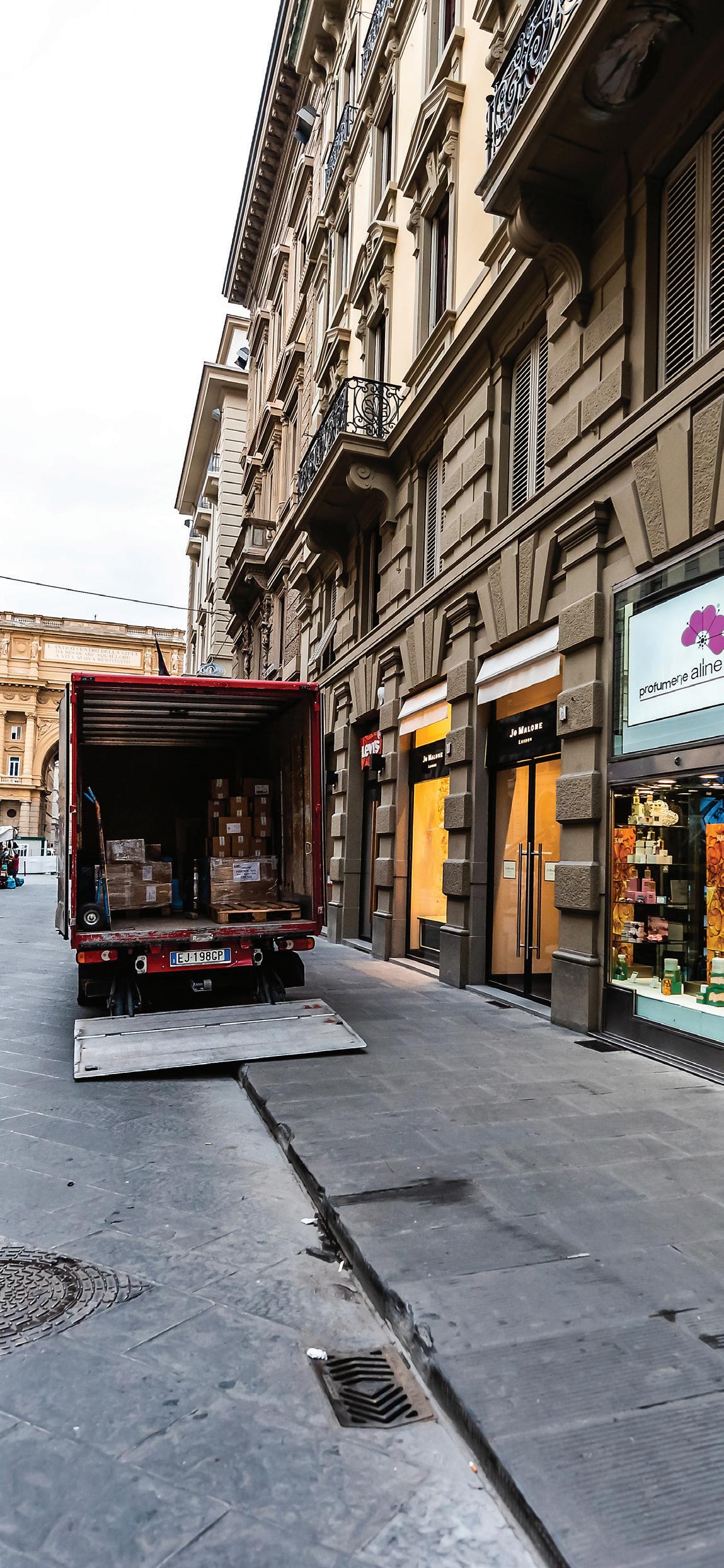
Using warehouse environments where there is more space and naturally greater efficiencies for sorting and arranging goods can reduce time and cost when replenishing stores or delivering parcels to customers. For example, packing cases of mixed goods (rather than single product types in separate cases) as well as loading them sequentially into delivery trucks to be unloaded in the most efficient order according to the store planogram can save time, improve accuracy and reduce waste as well as freeing up in-store staff to provide customer services.
reducing the number of journeys that need to be made to replenish stores in neighbouring areas can help to not only reduce cost but also can reduce other externalities such as road congestion and pollution. Using consolidation centres – where deliveries from all suppliers to a number of retailers and businesses within a designated area to be brought a single point outside of congested area and are consolidated into single consignments and delivered to a schedule – can help to reduce the challenges of delivery to individual stores, particularly high street stores.
Similar strategies could be employed in shopping centres also for outbound deliveries of online retail sales being shipped from store. There are challenges with utilising shopping centre units for ship-fromstore, both from a cost perspective (shopping centres require more time for drivers to navigate to collect parcels from stores compared with retail parks for instance) and from a customer experience perspective (having delivery drivers walking through shopping centres and stores themselves could interrupt customers’ enjoyment). By using a marshalling area within a shopping centre, store staff can bring goods to be collected by delivery drivers in a more efficient and less experience-interrupting way.

HOW CAN LOGISTICS OPERATIONS BE OPTIMISED AND REDUCE INEFFICIENCIES TO REDUCE COST? DEPLOYING A COMBINATION OF STRATEGIES TO ADDRESS SPECIFIC CHALLENGES CAN ADD INCREMENTAL GAINS TO LOGISTICS OPERATIONAL OPTIMISATION, SUCH AS:

by reducing the number of touch points in a retailer’s supply chain and their logistics partners can reduce cost, delay and risk of damage. For example, pre-sorting parcels for delivery at a parcel hub can reduce the number of times a parcel needs to be navigated through a delivery network before its final movement to the customer.
employing technology such as dynamic wayfinding technologies can help navigate better, more efficient routes to ensure products get to where they need to be at minimal cost. This can also include determining the best mode of transport for appropriate speed and cost, particularly when ordering for inventory restocking. Technology can also help to determine the best vehicle loading strategies, so that products are more swiftly and efficiently moved off vehicles and into the correct locations.
using technology such as track-and-trace help consumers better understand where their delivery is – and where they need to be and when to ensure it reaches them on the first attempt of delivery. It also can offer them the ability to divert or delay deliveries to a more convenient place or time and minimise costs from wasted journeys and repeated delivery attempts.
Improving warehouse management systems (WMS), creating a central view of stock and deploying automation will also help to optimise systems by ensuring inventory can be located and moved swiftly and efficiently. Efficient reordering and in-bound inventory processing can also add incremental improvements to overall systems by ensuring that products are in stock and are ready to be deployed, minimising drag on working capital.

RETURNS REPRESENT A SIGNIFICANT CHALLENGE TO BOTH ENSURE PRODUCT AVAILABILITY AND MINIMISE COST.

So how can retailers and their logistics partners seek to reduce returns and when they do happen, how can they be efficiently processed to be ready to be resold?
In the first instance, identifying why returns are happening can help retailers to reduce them occurring. For example, in an online fashion sales scenario, if a retailer’s size guide does not give sufficient information for a customer to select the correct size, they are more likely to order more than one size to ensure that they have secured the right product for them. Improving information as well as including a variery of photographs and videos can help to prevent ordering of multiple or incorrect products.
Improving product consistency in areas such as sizing can also have a significant impact on consumer behaviour including returns. Working with suppliers as part of a retailer’s sourcing strategy can underpin investments in technology (such as laser-cutting and other automated processes) which aid consistency of sizing giving consumers confidence in sizing by brand and ultimately reducing returns.
When returns do happen, getting products back into revenue-generating readiness is crucial. Having dedicated returns teams or using specialist 3PL services to handle returns can be effective, particularly where returns volume and sales velocity are high such as in fast fashion retailing. Key is the speed with which returns can get to a returns processing facility and then move through it swiftly and accurately. Staff and systems need to accurately identify the product and the appropriate refurbishment (such as laundering and repairing) to bring it back to saleable condition and then repack and retag it so that it can be reinserted into the retailer’s inventory management system. Similarly, if the product cannot be reclaimed, they need to be disposed of which creates its own challenges from a cost and sustainability perspective.
The cost of the return journey – which is often entirely borne by the retailer – is also greater when a single parcel being sent back. Retailers can try to coax consumers to return in more cost-efficient ways. This could include quicker refund times for dropping off at stores, parcel stores or lockers where collections of returns can be done in larger volumes (reducing the individual cost per item). Encouraging returns to stores can also mean that instore staff can start the returns processing of a product (including initial assessment of a product’s condition and collecting appropriate information from the returner).

HOW ARE RETAILERS AND THEIR LOGISTICS PARTNERS ENSURING THAT THEY CAN OPERATE THEIR LOGISTICS IN AN ENVIRONMENT OF CONSTRAINED AVAILABILITY OF LABOUR?
Part of the strategic response to labour challenges has been the adoption of technology. Technology is now being, and will continue to be, more widely adopted because labour issues will continue to challenge logistics operations and because new technologies are becoming cheaper to implement, more flexible and can be used in a greater variety of operations. Strategies being adopted include:
the majority of technology that is deployed in logistics operations is used to complement and enhance human skills, efficiency and productivity with relatively little of the processes in a distribution centre being fully automated. Automation technologies deployed can range from:
• picking assistance systems (such as a pick-to-light or wearable warehouse navigation guidance devices).
• Goods-to-Person (GTP) solutions (including conveyors, carousels and lift systems to bring product to stationary pick staff).
• Automated Storage and Retrieval Systems (ASRS) (including automated material-carrying vehicles, tote shuttles and mini-loaders).
• Automatic Guided Vehicles (AGVs) (which utilise magnetic strips, wires or sensors to navigate a fixed path through the warehouse).
• Autonomous Mobile Robots (AMRs) (which use GPS systems to create effective routes through a warehouse).
Full automation of tasks tends to be used to replace people when jobs are considered one of the four D’s (dull, dangerous, dirty and difficult), freeing up human capital to do jobs that machines currently cannot.
alongside automation, digitalising data that feeds swiftly and plentifully into warehouse management systems (WMS) helps to create efficiencies and reduce cost. WMSs help to improve accuracy, reduce risk, speed up processes and create real-time visibility of inventory levels and locations, warehouse operations and order fulfilment. The data that is captured and used on a minute-by-minute basis to ensure the efficient operation of the warehouse can also then be used in AI tools for better analysis and use for predictions and interventions. Digital technologies such as augmented reality can not only help to improve productivity in warehouse roles but can also be used to enhance skills such as guiding staff in more complex tasks.
being able to move goods further with less labour (especially drivers) can be an attractive way to be able to achieve efficiencies. This could include modal choices (such as rail, waterways or short-sea shipping, depending on the cost) or using larger vehicles for greater volume movement. In the future, the use of autonomous vehicles (AVs) for transportation could also be adopted to mitigate the shortage of goods vehicle drivers in particular.

OTHER LABOUR STRATEGIES FOCUS ON HOW TO SOURCE, ATTRACT AND RETAIN PEOPLE TO LOGISTICS ROLES:
Promoting the logistics industry as a rewarding place to work has been accelerated in recent years as the pandemic highlighted how important well - functioning supply chains are to everyday life. Logistics employers have been engaging in programmes to help create ways into working for people often marginalised (such as people with disabilities or veterans).
Logistics employers have found themselves having to use more staff-centric employment initiatives in order to attract and retain staff. For example, offering shift patterns that better fit with employees’ lifestyles including shorter weekday shifts for working parents or optional weekend shifts. This can unlock opportunities to engage people who might otherwise discount these roles as unworkable for them.
HOW CAN RETAILERS ADDRESS SUSTAINABILITY CHALLENGES AND THE COMMITMENT TO REDUCING IMPACT WITHIN THEIR LOGISTICS OPERATIONS?

Improving logistics real estate is part of the challenge: finding ways to reduce energy requirements or use ‘greener’ energy from renewable sources all contribute to the reduction of environmental impact. Asset improvement strategies can include fitting solar photovoltaic panels to roofs, replacing lighting and heating systems for more energy efficient ones and installing energy monitoring and management systems to help identify and implement efficiencies.
Similarly, when choosing new buildings or redeveloping or extending existing assets, retailers have the opportunity to improve not only the operational carbon emissions but also to minimise the embodied carbon of construction. This can include using lower-carbon materials, reusing or recycling materials from existing buildings and incorporating design features and building practices that reduce overall energy required.
However, it is in locational choice that retailers and their logistics partners can make even greater impact in reducing carbon emissions. According to the World Economic Forum, transport accounts for around 87% of global emissions from the freight transport industry with road freight alone representing over 50%. Optimising distribution centre locations – that is, choosing locations that make the journeys for replenishment of stores or delivery of parcels to customers most efficient –as well as alternative transport modes (such as rail and inland waterways) will not only represent financial cost savings but also can mean reduction in overall carbon emissions.
In addition, retailers and their logistics partners can look to new and emerging technologies such as electric and alternative fuels vehicles or to further reduce emissions on the miles that still need to be travelled. Navigation technologies can also improve routes to reduce emissions as well as cost. As the technologies develop, autonomous vehicles (including large goods vehicles) could also present opportunities not only for solutions to labour challenges but also cost efficiencies as they could be more fuel efficient and therefore create less environmental impact.



FOR EUROPEAN LOGISTICS REAL ESTATE, THE RETAIL SECTOR ACCOUNTS FOR TYPICALLY 25%- 33% OF TOTAL ANNUAL TAKE-UP IN ANY GIVEN YEAR WITH EVEN MORE EXPOSURE THROUGH THE 3PL MARKET. Space is of course required to store inventory but how are the evolving requirements of retail logistics impacting the real estate that needs to accommodate them?
RETAILERS HAVE TYPICALLY REQUIRED A RANGE OF SIZES FOR THEIR DISTRIBUTION CENTRES BUT THERE HAS BEEN AN OBSERVABLE TREND TOWARDS LARGER UNITS IN RECENT YEARS.
Retailers in Europe historically held stock for their store replenishment and online orders in separate systems as they have different storage and handling characteristics – store replenishment is is typically conducted at case or pallet pick (that is, much closer to the nature by which the product is received from suppliers) and shipped in bulk (on a pallet or in a roll cage) whereas online orders are usually fulfilled as ‘singles’ requiring individual items to be picked from within the larger cases/pallets and then packed in to parcels and smaller, more customer-friendly packaging.
However, retailers have recently shown an appetite for consolidating stock holdings into single, larger buildings within which both online and store-based retail distribution is managed. This affords not only operational synergies by having both systems within one building but having a single view of stock over the entire holding means that inventory can be optimised.

Over the past several years we have seen European take-up of logistics buildings over 50,000 sqm increase: in the pre-pandemic years, almost 4 million sqm of space as units of 50,000 sqm or more was taken up by retailers, but during the pandemic this doubled. Since the end of 2021, the market has shifted and total take-up volumes have fallen by 28% across Europe. However, retailers have continued to take more units of 50,000 sqm with take-up for the period 2022-H1 2024 totalling almost 5 million sqm, still in excess of the 2018-2019 levels.
EUROPEAN LOGISTICS OCCUPIER TAKE-UP BY RETAILERS, BUILDINGS OF 50,000 SQM OR MORE
Source: Cushman & Wakefield Research (data relates to UK, Germany, France, Spain, Poland, Italy, Czech Republic, Slovakia and Hungary) Million sqm
Whilst retailers have looked to larger buildings for consolidation strategies, particularly for the first or middle mile of journeys in their logistics operations, they have also continued with their appetite for smaller buildings, particularly to serve the last mile: indeed as their city logistics strategies develop, retailers and their logistics/parcel carrier partners are complementing larger buildings with smaller buildings in edge-of-city or even in inner-city locations. These buildings can typically range in size from 2,000 sqm to 20,000 sqm but will depend on the scale of a retailer’s or their partner’s operations for that city.
AS IS ALWAYS THE CASE, LOCATION IS OF COURSE AN IMPORTANT FACTOR FOR RETAIL LOGISTICS ASSETS. HOWEVER, FOR DIFFERENT PARTS OF THE SUPPLY CHAIN, LOCATIONAL CHOICE MEANS DIFFERENT THINGS.
For the first and middle miles of retail logistics journeys, proximity to markets to serve (be it stores or to parcel operators’ fulfilment hubs) is an important consideration but so to is proximity to inbound nodes (such as ports and major supplier factories or distribution centres) and locations with appropriate access to labour. The balance between the cost of the inbound outbound logistics along with location-specific factors such as labour and property costs make a big difference to the locational choices for these, usually large, buildings.
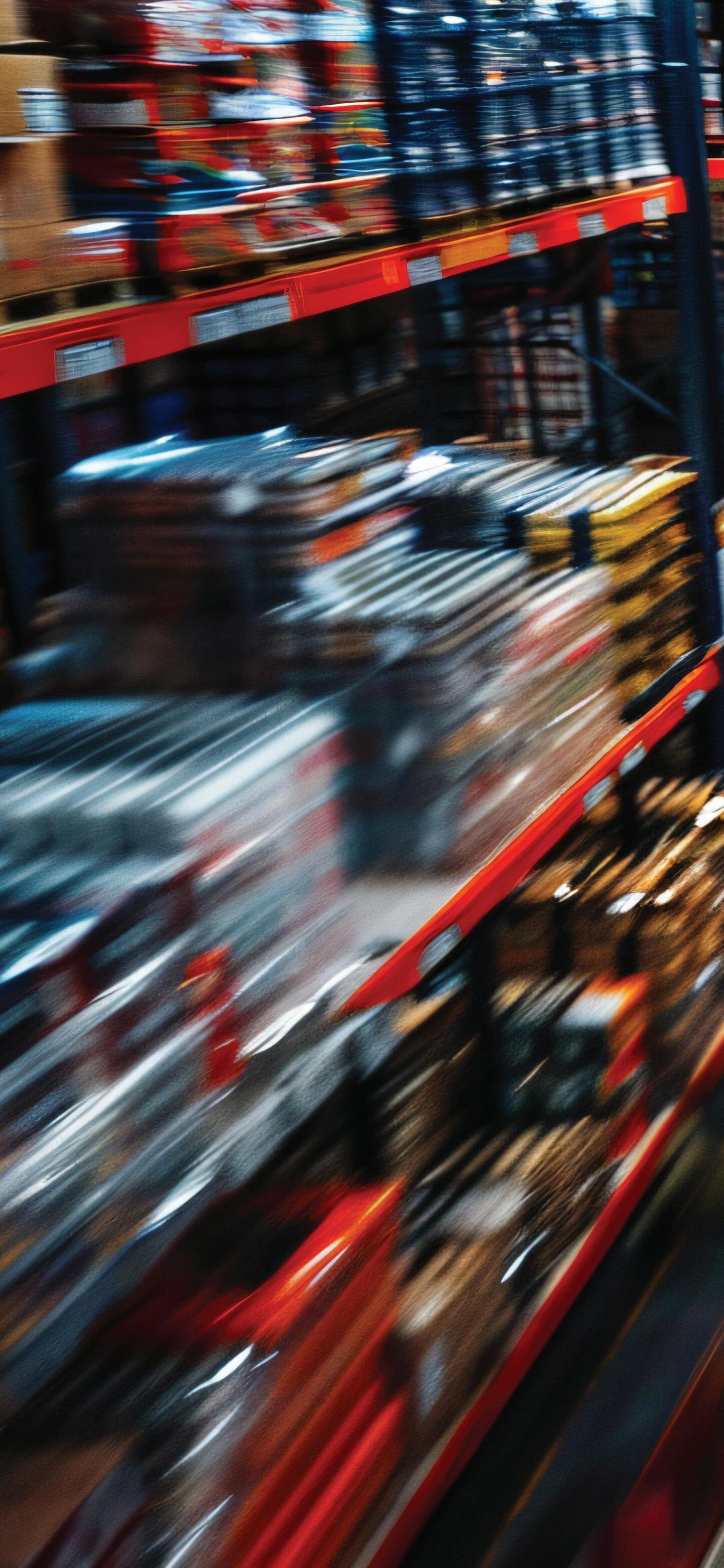
For the last mile, proximity to the markets to serve (that is, the customer as the final destination) is critical. Being close enough to deliver parcels in a way that ensures customer satisfaction but that minimises cost-to-serve is a key reason that last mile depots have grown in importance over the past 5-7 years. However, what is important to note is that, for city logistics strategies, locational choice is not the same for every city. Understanding the complexion of individual cities, the demographic spread and the demand to be served will help to guide retailers and their logistics partners to make effective locational choice decisions on a city-by-city basis.
Locational optimisation for the first, middle and last miles will not only mean financial cost reduction but also can lead to carbon emissions reduction: ensuring that journeys are optimised by locating distribution centres in appropriate locations can have a significant impact on the overall emissions of a retailer’s logistics network, which in turn will make a disproportionately large impact on their overall emissions.
It is also important to consider how locational strategies will evolve in the future. For example, city centres are becoming harder to navigate for both store replenishment and online retail parcel delivery due to limitations to vehicle movements (such as the imposition of lowemissions zones or even pedestrianisation of city centres). Similarly, first mile and middle mile distribution centre locations may be influenced by the development of new technologies such as low or zero emissions large goods vehicles with longer ranges and autonomous vehicles which rely less on human drivers to navigate journeys. The changing dynamic around consumer delivery preference and options will also impact ‘upstream’ distribution locations and configuration with greater consolidation, handling and outbound delivery efficiency achievable from methods such as locker boxes.


AS RETAILERS’ LOGISTICS OPERATIONS HAVE BECOME MORE SOPHISTICATED, THEY HAVE TYPICALLY REQUIRED HIGHER-QUALITY SPACES IN ORDER TO BE EFFICIENT.
This has meant that retailers have taken a disproportionately higher volume of space as new/Grade A space: since 2017, 78% of space taken in Europe by retailers has been as new or Grade A space.
OCCUPIER TAKE-UP BY RETAILERS, BY QUALITY (2017-H1 2024)
Requirements of larger buildings in particular have been particularly demanding including wide column-free clear spans, eaves heights of at least 12m and weight-bearing and flatness appropriate floors (including those that can tolerate the fitting of mezzanine floors with loading for inventory and automation).
Whilst last mile assets in city locations have been less exacting in specification (with location being the priority), all assets will increasingly be focus of sustainability measures, including the energy-efficiency of the buildings and potential improvements through asset management strategies.
Source: Cushman & Wakefield Research (data relates to UK, Germany, France, Spain, Poland, Italy, Czech Republic and Hungary)
Energy requirements for some retailers have increased significantly in recent years, particularly as a result of the increase in automation and also the additional need from EV charging as many retail and logistics businesses look to transition to or grow their use of zero or low emission vehicles. The ability to source energy – both from grid with reliable energy supply and from on-site renewables and storage –is now a major factor in many logistics occupiers’ decisionmaking process, especially for larger assets where the energy requirement can be great.
In order to ensure staff attraction, engagement and retention, logistics buildings now need to include more staff welfare spaces, particularly within larger warehouses (for example, facilities for drivers are now typically provided in more than one location on site given the walk distance in very large buildings). Also the quality of staff spaces are now expected to be of higher quality than in the past (including a wider range of available facilities along with higher quality fit-out of offices, bathrooms and kitchens) and also include attractive outside spaces for staff to enjoy break times in attractive settings in the immediate vicinity.
In addition to the above, retailers and logistics space users are increasingly seeking buildings which are capable of meeting their future needs. This includes adaptability of buildings and spaces within park environments to cater for emerging requirements such as shared access to renewable energy held in battery storage for use by park occupiers. Developers are indeed now incorporating battery storage units into new developments. Similarly, as vehicle technology evolves, retailers and logistics occupiers will potentially have additional requirements such as access to hydrogen for ‘refuelling’ hydrogen-cell large goods vehicles.
FOR RETAIL REAL ESTATE, THERE ARE FEWER ALTERATIONS TO ACCOMMODATE CHANGING LANDSCAPE OF RETAIL LOGISTICS AS THESE ARE TYPICALLY THE DESTINATIONS TO SERVE. HOWEVER THERE ARE SOME ADAPTATIONS THAT ARE BEING OR COULD BE MADE TO RETAIL REAL ESTATE OF WHICH TO BE AWARE.
Ship-from-store or microfulfilment strategies seek to ‘sweat’ inventory across a retailer’s network and offer fulfilment from the closest available point to the consumer; however, it can compromise an experience-based offer to in-store shoppers (such as on-shelf stock availability or in-store enjoyment being disrupted by online orders being picked up in-store). The opportunity from ship-from-store must also be balanced with the additional costs incurred and therefore requires the ability to be able to capture sales at non-discounted prices and recover some or all of the delivery costs from the consumer.
Similarly when using stores for online sales pick-ups and returns, retailers need to organise stores to ensure that these operations complement the in-store shopping experience. Dedicated returns and pick-up areas, ideally within minimal requirement for staff to be diverted from in-store customer service opportunities, will help to reduce the impact on in-store experience but will provide online shoppers with a range of flexible delivery and returns options. Recent survey evidence from Retail Economics and Auctane show that across European countries, 38-55% of shoppers surveyed said that they would prefer to return goods to a physical store or other designated drop-off point versus courier collection or returning by mail themselves. Additionally, attracting customers in-store provides retailers with additional customer touchpoint opportunities for additional sales and brand engagement.
Source: Retail Economics, Auctane Ecommerce Delivery Benchmark Report 2024

Both click-and-collect and returns represent opportunities for not only individual retailers within their own retail unit but within wider environments – such as retail parks and shopping centres – to create hub locations for customers to drop off returns and pick up online purchases. Where appropriate, this could avoid the interruption to in-store experience whilst still offering customers the flexibility to choose where and when they would like to receive or return their orders.
In terms of in-store sales, retailers could consider how to orient store floorspace to ensure inventory optimisation. For example, how can retailers optimise sales floorspace for revenue generation whilst ensuring they maintain appropriate product availability in store through their logistic networks? Similarly, how can store layouts be both engaging to customers and efficient to replenish?
Retailers may wish to consider strategies that help them to minimise their stock holdings in store and incentivise customers to try products in store but order online, known as ‘showrooming’. This could allow for smaller stock holdings in store but a more experience-oriented store space, with the opportunity for customerengaging in-store-only experiences.

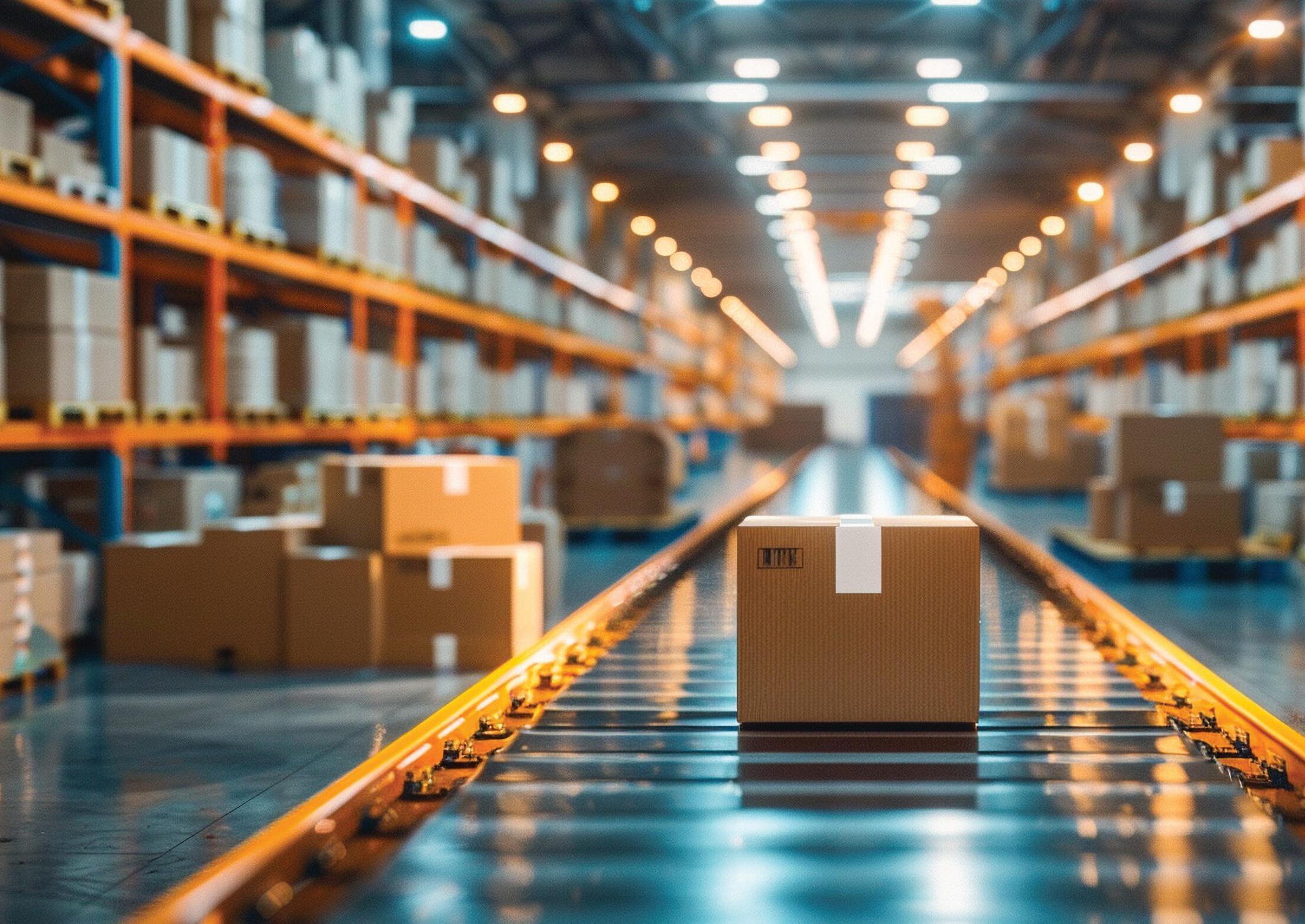
FOR MANY RETAILERS, WAREHOUSES REMAIN THE PLACES FROM WHICH TO SERVE BOTH THEIR ONLINE CUSTOMERS AND STORE-BASED REPLENISHMENT DEMANDS EFFICIENTLY FROM BOTH A COST AND OPERATIONAL PERSPECTIVE.
Retailers must therefore challenge whether their current operational logistics real estate is where and what it needs to be to achieve these efficiencies, both now and in the future.
Reorganisation or reconfiguration may play a part of the solution but as shown, modern space is more often required to ensure logistics operations, typically including elements of automation and sophisticated product handling equipment and warehouse management systems, can operate efficiently. Engaging in dialogue with landlords for permission to improve or even discuss opportunities to replace assets could be part of the ways in which retailers can secure the right space for their operations.
Similarly where there are investments in fit-out that could improve operational efficiency for retailers, there may be opportunities for cooperation with landlords to structure leases to include elements of operational capital investment, such as in material handling equipment, within rental agreements. Capital contributions by landlords that can be rentalised over the term of a lease could prove attractive to retail occupiers given the typically longer period of write-down than within standard depreciation periods should the occupier have to capitalise the investment themselves. Also, given the multiple competing priorities for capital investment across the supply chain, rentalising real estate-related components will prove attractive for some occupiers.
Alternatively where a move to a new building is needed it is important to start real estate searches with an appropriate lead time as the space required may not be easily available, especially when relocating to a high-quality asset of significant size. Early engagement with developers and/or landlords to create new buildings may be necessary as development may take more time in some markets than others. In some markets, for buildings of more than 50,000 sqm, a lead time of 3-5 years from enquiry to operation is not uncommon.
When it comes to retail real estate, it is essential to ensure that any configuration for click-and-collect or returns in stores is carefully planned and implemented making sure not to interrupt the in-store experience for customers.

FOR LOGISTICS LANDLORDS, IT IS ESSENTIAL TO UNDERSTAND HOW AND WHY LOGISTICS BUILDINGS REPRESENT VALUE IN A RETAILER’S SUPPLY CHAIN.
When a building represents an integral part of their logistics operations, it will mean that a tenant is more likely to remain in occupation so long as the building remains relevant and efficient as their needs evolve. Landlords can help to ensure that their retailer tenants are well served by their buildings by maintaining dialogue to understand their challenges and needs of the building and helping to facilitate solutions such as extensions and licences to alter in exchange for improved lease terms.
Landlords can also help retailers and other logistics occupiers to help attract and retain staff by creating places that people want to work in. This could mean delivering new buildings or existing asset improvements that create attractive places for people to work. It could also mean developers and landlords of larger logistics park environments offering park-wide schemes that engage people to consider the park a place to work (such as hosted careers days or community engagement days) or that help to make working on the park more attractive (for example, park-wide ride-share schemes or on-park food and beverage offerings).

FOR RETAIL LANDLORDS, WORKING WITH RETAILERS TO UNDERSTAND HOW TO ENSURE RETAIL REAL ESTATE ASSETS REMAIN RELEVANT AND APPROPRIATE FOR THEM WILL HELP TO ENSURE THEY REMAIN IN OCCUPANCY.
Part of this can be considering what landlords can offer to tenants as their logistics strategies evolve – for example, creating marshalling areas for parcels to be dropped off by retailers and for couriers to come to collect could differentiate retail schemes and make them attractive to retailers. It could also be a way of creating value in underused spaces such as vacant units, underused service areas or unused land in appropriate areas.


The two guiding principles of retail logistics optimisation are:
• MAXIMISING CUSTOMER EXPERIENCE: an in-store retail experience (split between experience and convenience) is a different proposition to an online retail experience
• MINIMISING COST-TO-SERVE: retail logistics networks are highly complex and require careful consideration of the financial, environmental and social costs they create
There are many factors for retailers to consider when seeking to optimise their logistics operations including:
• PRODUCT AVAILABILITY: ensuring that stock is where and when customers want them.
• DELIVERY OPTIONS FOR ONLINE SHOPPING: offering a range of delivery options and ensuring that expectations are met.
Minimising cost-to-serve is a key factor in retail logistics; some of the challenges that can create cost include:
• CHANGING DYNAMICS: both planned and unplanned changes can mean disruptions and cost.
• STORE FORMAT DIFFERENCES: location, size and format of stores can create complexities and therefore cost.
• SUBOPTIMAL SYSTEMS: inefficiencies mean more time, cost and risk for retailers.
• RETURNS: returns represent a drag on revenue capture and also actual cost for transporting and treating returned goods.
• LABOUR: labour availability and cost is a significant challenge for logistics operations.
• SUSTAINABILITY: the obligation to reduce and report on sustainability impact continues to grow for all businesses, including retailers.
Logistics operations’ improvement and optimisation is often as a result of the sum of incremental gains. Logistics operations are responding to these challenges to make a difference to overall performance by:
• Using data and analytics (including developing central view of stock knowing where each item of stock is), a unified customer view (to better learn about consumers’ behaviours and patterns) and careful modelling of planned changes and unplanned events.
• Focusing on customer-centric strategies to improve experience, such as offering delivery options to customers but incentivising them to choose ones that are less costly to serve.
• Improving logistics systems’ efficiency to reduce cost and to create revenue generation opportunities more swiftly, such as improving returns processes as well as adopting technologies to enhance labour productivity.
• Improve sustainability impact through location optimisation and use of vehicle and navigation technologies as well as improving staff recruitment, engagement and retention.
• SIZE: retailers have shown increased appetite for larger buildings of more than 50,000 sqm as they employ consolidation strategies: Retailers’ take-up of these buildings in Europe is up 30% in the 2022-H1 2024 period compared with 2018-2019. Smaller buildings are still of interest, however, particularly to serve the last mile in online sales delivery.
• LOCATION: for both the first and middle miles as well as the last mile, proximity to markets to serve is critical. However, it is important to understand how locational strategies for last mile delivery is different for different cities. Also locational optimisation for the first, middle and last miles will not only mean financial cost reduction but also can lead to carbon emissions reduction.
• SPECIFICATION: for modern logistics operations, retailers typically require high-quality spaces: since 2017, 78% of floorspace taken up in Europe by retailers has been as new/Grade A space. Energy requirements have grown in importance as has the sustainability impact of buildings as well as the inclusion of more, higher-quality staff welfare spaces.
• Strategies for ship-from-store and online sales pick-ups and returns means that retailers need to organise stores to ensure that these operations do not interrupt the customer experience for in-store shoppers. This could mean dedicated spaces for these operations or the creation of hub locations in central areas such as within shopping centres.
• Inventory optimisation strategies could mean orientations of floorspace to ensure efficient store replenishment but without compromising in-store shopper experience.
• For retailers, understanding their own logistics real estate portfolios and how they can be optimised for operational and cost-efficient logistics operations is key. This may mean reorganisation or improvements to existing assets or taking new buildings to meet their needs. Early dialogue with landlords to execute these strategies is important, especially for assets of scale or those of strategic importance.
• For their retail real estate, careful planning and implementation of logistics-supporting strategies, such as ship-from-store and click-and-collect and in-store returns, is essential to make sure not to interrupt the in-store experience for customers.
• For logistics landlords, it is essential to understand how and why logistics buildings represent value in a retailer’s supply chain. Landlords can help to ensure that their retailer tenants stay in occupation by maintaining dialogue to understand their challenges and needs of the building and helping to facilitate solutions such as extensions and licences to alter in exchange for improved lease terms.
• For retail landlords, working with retailers to understand how to ensure retail real estate assets remain relevant and appropriate for them will help to ensure they remain in occupancy. Part of this can be considering what landlords can offer to tenants as their logistics strategies evolve which could also serve to create value in underused retail spaces.
EUROPEAN REAL ESTATE STRATEGIES FOR RETAIL EVOLUTION


SALLY BRUER
Head of EMEA Logistics & Industrial and Retail Research sally.bruer@cushwake.com
Cushman & Wakefield (NYSE: CWK) is a leading global commercial real estate services firm for property owners and occupiers with approximately 52,000 employees in nearly 400 offices and 60 countries. In 2023, the firm reported revenue of $9.5 billion across its core services of property, facilities and project management, leasing, capital markets, and valuation and other services. It also receives numerous industry and business accolades for its award-winning culture and commitment to Diversity, Equity and Inclusion (DEI), sustainability and more. For additional information, visit www.cushmanwakefield.com

Copyright © 2024 Cushman & Wakefield.
All rights reserved. The information contained within this report is gathered from multiple sources considered to be reliable. The information may contain errors or omissions and is presented without any warranty or representations to its accuracy. FOR MORE INFORMATION PLEASE CONTACT:


TIM CRIGHTON
Head of EMEA Logistics & Industrial tim.crighton@cushwake.com


ROBERT TRAVERS
Head of EMEA Retail Leasing Agency robert.travers@cushwake.com


MICHAL TOPOROWSKI
Associate, EMEA Logistics & Industrial and Retail Research michal.toporowski@cushwake.com


MICHAEL CARSON
Head of Supply Chain & Logistics Advisory, EMEA michael.carson@cushwake.com


YVONNE COURT
Head of EMEA Cross Border Retail & Leisure Services
yvonne.court@cushwake.com